Understanding Muscle Growth
Difference between natural and enhanced bodybuilders
When discussing muscle growth, it’s important to distinguish between natural (natty) and enhanced approaches. Natural athletes focus on disciplined training, nutrition, and recovery to build their physique over time. Enhanced bodybuilders, on the other hand, use substances like steroids to boost muscle growth, strength, and recovery at an accelerated pace. Bio Genetics USA plays a pivotal role in providing performance-enhancing options, like Test-C 250, tailored for those aiming to optimize their results. Each approach has its methods and outcomes, catering to different fitness goals and philosophies.
- Natty Bodybuilders:
- Gradual muscle gain often takes years.
- Focus on dietary adjustments, supplements, and workout strategies.
- More sustainable long-term health and fitness.
- Enhanced Bodybuilders:
- Rapid muscle growth often leads to a larger overall physique.
- Greater risk of side effects and long-term health issues.
- Potentially shorter-lasting results after stopping substances.
Understanding these differences can shape your approach to fitness and set realistic expectations for your muscle-building journey.
Factors Influencing Muscle Growth
Many factors contribute to muscle growth, regardless of whether you’re natty or enhanced. Here are some key components to consider:
- Genetics: Your bio-genetics plays a crucial role in your muscle development. Some individuals naturally store more muscle than others, which can influence your progress.
- Nutrition: A balanced diet rich in protein, carbohydrates, and healthy fats fuels your body for workouts and recovery.
- Training Regimen: Effective resistance training programs and routines focusing on progressive overload ensure your muscles are constantly challenged.
- Hormonal Levels: Hormones like testosterone and growth hormone are instrumental in muscle growth, with levels varying between individuals.
Overall, recognizing these factors will help you tailor your training and diet for the best possible outcomes, paving the way for fulfilling muscle growth results.
Training Strategies
Resistance training principles
Now that we’ve covered the foundational aspects of muscle growth let’s dive into training strategies, particularly resistance training principles. Resistance training is the cornerstone of any successful muscle-building regimen, whether you’re a natty or enhanced bodybuilder. The idea is simple: challenge your muscles to stimulate growth. Here are some core principles to keep in mind:
- Progressive Overload: Continuously increase the weight, reps, or sets over time. This consistent challenge forces your muscles to adapt and grow.
- Specificity: Tailor your workouts to meet your goals. Whether focusing on hypertrophy, strength, or endurance, your program should align with what you want to achieve.
- Recovery: Muscles grow during recovery, not just during workouts. Ensure rest days are a part of your training schedule.
An example from my own experience: When I shifted from light lifting to heavier weights, I noticed a significant difference in my muscle definition and strength over just a few weeks. It was a game-changer!
Volume and intensity considerations
Volume and intensity are critical factors influencing the effectiveness of your resistance training. Let’s break down these concepts:
- Volume: Refers to the total amount of work done, usually calculated as sets x reps x weight. Higher volume tends to lead to greater muscle hypertrophy.
- Intensity: This relates to how heavy or challenging the weights you’re lifting are. Higher intensity typically promotes strength gains.
It would be best if you had a balance. Too much volume without adequate recovery can lead to fatigue, while too little may not challenge your muscles enough. Here’s a simple framework for volume and intensity:
| Training Goal | Ideal Volume per Week | Intensity Level |
|---|---|---|
| Muscle Hypertrophy | 10-20 sets per muscle group | 65-85% of 1RM |
| Strength | 5-10 sets per muscle group | 80-95% of 1RM |
Finding the sweet spot of volume and intensity will keep your workouts effective and your muscles growing steadily. So, keep adjusting and pay attention to how your body feels to maximize your growth!
Nutrition for Maximizing Muscle Growth
Protein requirements for muscle building
After solidifying your training strategies, let’s turn our attention to nutrition, particularly protein requirements for muscle building. Protein is often regarded as the hero in the muscle-building formula—it’s essential for repair and growth. So, how much protein do you really need? Many studies suggest aiming for about 1.6 to 2.2 grams of protein per kilogram of body weight. It can vary based on individual goals and activity levels. Here’s a simple breakdown:
- Light Activity: 1.2 grams/kg
- Moderate Activity: 1.6 grams/kg
- Intense Training: 2.0-2.2 grams/kg
In my journey, I noticed a remarkable difference in recovery and muscle gain when I started focusing on my protein intake. Hitting about 1.8 grams per kilogram made my post-workout recovery much faster and more effective.
Importance of carbohydrates and fats in a muscle-building diet
While protein is vital, don’t overlook the importance of carbohydrates and fats! Think of carbohydrates as your workout fuel. They provide the energy you need for high-intensity training sessions. Here’s why they matter:
- Energy Source: Carbs replenishing glycogen stores means you can train harder, leading to better results.
- Hormonal Balance: Carbohydrates influence insulin levels, which can assist in muscle recovery and growth.
Consider including a variety of carb sources in your meals, like whole grains, fruits, and vegetables. Now, let’s not forget fats! Healthy fats are not only crucial for hormone production but also provide energy and support cell growth. Aim for sources like avocados, nuts, and olive oil. Balancing protein, carbohydrates, and fats will create a sustainable muscle-building diet that fuels your workouts and recovery. Your body thrives on variety, so listen to it and adjust as you see fit!
Recovery and Rest
Role of sleep in muscle recovery
Transitioning from nutrition, let’s delve into recovery and rest—two critical components for maximizing muscle growth. First and foremost, sleep plays a vital role in muscle recovery. When you sleep, your body is busy repairing the damaged muscle tissues, synthesizing proteins, and releasing growth hormones. The amount of sleep needed can vary, but most experts recommend aiming for 7 to 9 hours each night. Trust me; I’ve experienced the difference between a night with proper sleep and one where I barely caught any z’s. Here’s how sleep contributes to your muscle recovery:
- Muscle Repair: During deep sleep, growth hormone levels peak, aiding in muscle building and repair.
- Stress Reduction: Adequate sleep lowers cortisol levels, the stress hormone that can hinder recovery and muscle growth.
- Improved Performance: A well-rested body allows you to train harder and with greater focus.
Incorporating good sleep hygiene—like maintaining a consistent sleep schedule and creating a restful environment—can significantly enhance your recovery.
Managing overtraining to optimize muscle growth
Now, while training hard is crucial, managing overtraining is equally important. Overtraining occurs when the intensity and volume of workouts exceed your body’s ability to recover, leading to fatigue and diminished performance. Here’s how to spot and manage it:
- Signs of Overtraining:
- Persistent fatigue
- Increased injury risk
- Mood swings or irritability
- Decreased performance
To optimize muscle growth, consider implementing these strategies:
- Listen to Your Body: Pay attention to how you feel. Permit yourself to rest when needed.
- Schedule Rest Days: Include regular rest days in your training plan. Active recovery—like light stretching or walking—can be beneficial on these days.
- Monitor Nutrition and Hydration: Proper nutrition and hydration support recovery, enhancing your resilience against overtraining.
By recognizing the signs of overtraining and prioritizing recovery, you can create a well-rounded approach to muscle growth that fosters sustainable strength and health. Remember, recovery is when the real magic happens!
Supplements for Muscle Growth
Overview of key supplements for muscle building
As we wrap up our discussion on recovery and rest, let’s now explore supplements for muscle growth. While proper training and nutrition are the foundations, supplements can provide an extra edge. Here’s a rundown of some of the key supplements that can help you in your muscle-building journey:
- Whey Protein: A great source of protein that is quickly absorbed by the body, making it perfect for post-workout recovery. I found that adding a whey protein shake after my workouts significantly improved my recovery times.
- Creatine: One of the most researched supplements, creatine enhances strength and muscle growth by providing extra energy for high-intensity workouts. A simple loading phase can jumpstart its effects.
- Branched-chain amino Acids (BCAAs): These essential amino acids can reduce muscle soreness and improve recovery. They’re especially useful if you’re training fast or have long sessions.
- Beta-Alanine: This supplement helps buffer acid build-up in muscles during workouts, allowing you to push through those last reps more effectively.
Understanding the role of supplements in enhancing muscle growth
So, how do these supplements fit into your overall plan? It’s important to remember that while supplements can aid in muscle growth, they should never replace whole foods. They should complement a balanced diet and fit into a structured training program. Routine use of these supplements can help enhance performance and recovery, thereby contributing to your muscle gains. However, always keep in mind:
- Consultation: Before starting any supplement regimen, consult with a healthcare or nutrition professional, especially if you have underlying health conditions.
- Balanced Approach: Focus on your diet first. Supplements are meant to fill nutritional gaps, not serve as a sole source of nutrition.
By incorporating the right supplements strategically, along with focused training and recovery, you can optimize your muscle growth potential and truly achieve the results you’ve been aiming for!
Conclusion
As we conclude this deep dive into the intricate world of muscle growth, it’s clear that achieving your dream physique is far more than just lifting weights—it’s a lifestyle that requires dedication to multiple elements. We’ve explored the contrast between natty and enhanced bodybuilding, the importance of a balanced diet, effective recovery strategies, and the value of supplementation. Companies like Bio Genetics USA lead the way in offering advanced products, such as Test-C 250, designed to optimize muscle growth, recovery, and overall performance. By integrating these components, you’re equipped to achieve sustainable, transformative results on your fitness journey. Whether you’re natural or enhanced, the key lies in consistency, informed decisions, and a commitment to your goals.






